|
Addressing Gender Equality and Women’s Empowerment through Distance Education: A Case of Programme for Self Help Group Facilitators by YCMOU
Anant Joshi
School of Education, Yashawantrao Chavan Maharashtra Open University, Nashik, MS, India
Madhavi Dharankar
School of Education, Yashawantrao Chavan Maharashtra Open University, Nashik, MS, India Kavita Salunke
School of Education, Yashawantrao Chavan Maharashtra Open University, Nashik, MS, India
Abstract
Capacity building is an essential aspect of women’s empowerment. Self Help Group (SHG) movement in country like India has played very important role in capacity building of women. Many NGOs have done good deal of work for SHGs. The facilitators work on behalf of the NGOs for formation and stabilisation of SHGs. The facilitator withdraws from the group once the group is stabilised. This is a very skillful task and the facilitator acquires required knowledge, skills and competence only through the experience. However it was found that there is a need of more than 10 million facilitators only in the State of Maharashtra (a State in India) and getting competent and committed facilitators was the main problem. YCMOU, one of the State Open Universities in India in collaboration with the NGOs developed a certificate programme for SHG facilitators. The endeavour of the development of the programme being collaborative in nature and having the direct relevance to women’s empowerment, was supported by Association of Commonwealth Universities (ACU). The systematically conducted pilot testing of the programme indicated that there were significant changes at the knowledge and skill levels of the prospective facilitators. The paper presents the success story of the programme.
Addressing Gender Equality and Women's Empowerment through Distance Education: A Case of Programme for Self Help Group Facilit
Social inequalities affect the lives of the most of the Indian women. They are often segregated from the main stream of education, employment, rights and empowerment. The difference in roles between men and women was determined not by the biological differences between men and women, in other words, not by the sex of the individual, but by the gender of the individual (Gopalan, Thukral & Kaur, 2000, p.5). Clearly there can be no change unless women are able to take charge of their own lives and over the financial and material resources. In other words, women need to be empowered. Government of India has been launching various schemes with the purpose of empowering women, like Swayamsiddha, reservations in local governments, etc. On the occasion of the fifty years of independence the Govenrnment declared Swarnjayanti Gram Swarozgar Yojana (SGSY). The basic objective of the SGSY is to bring the assisted poor families (Swarozgaris) above the Poverty Line by providing them income-generating assets through a mix of Bank Credit and Governmental Subsidy (Govt. of India, 2002). It covers all aspects of self-employment of the rural poor including women. Organization of the women into Self Help Groups (SHGs) is one of these aspects. Families Below the Poverty Line (BPL) in rural areas constitute the target group of the SGSY. SGSY is being implemented by mainly Non-Government Organizations (NGOs) and the involvement of NGOs is in the area of the development of Self-Help Groups (SHGs) i.e. formation of SHGs, their capacity building, training, assistance to acquire Bank finance and post-project monitoring, etc. This approach goes a long way in making them financially and socially independent and politically confident. Thus, SHG of women plays a crucial role in empowering women.
`Self-help' may be defined as a process, group or organisation comprising people coming together or sharing an experience or problem, with a view to individual and/ or mutual benefit. As empowerment commonly means `becoming powerful', self-help may thus be viewed as one form of empowerment. Through self-help women can empower others and be empowered themselves (Adams, 1990, p 1). An SHG has an average size of about 20 people from a homogeneous class. They come together for addressing their common problems. The development organizations are primarily focussing upon the promotion of SHGs that comprise only women (Thukral, 2000, p.11). The reasons for this situation are:
Women are overworked and underfed, hardly control any assets of income, are socially discriminated and are excluded from `public spheres'.
02. Women are more worried about the welfare of their families. They are willing to make greater efforts towards improving the health, education of their children and families.
In India, as the `top-down' approach was not having any impact in defeating poverty, development agencies realized that a new approach was needed. SHG was the bottom-up approach. Looking at the crucial role that women play in the development of the society, it was not surprising that developmental agencies selected women to promote SHGs. Thus the establishment, development and proliferation of SHGs of women became a movement. The SHG movement is believed to have begun in Bangla Desh. In India it started in 1974 by Ela Bhat in Gujarat State. Later on it proliferated to a greater extent in Andhra Pradesh in the form of Cooperative Development Foundation. Women's SHGs were found to be extremely `working' idea in eradication of poverty.
While SHGs have been proved to be an effective strategy catering to the needs and gender reality of women, the only slightly weaker aspect of this movement is the lack of linkages among the groups. The net result is the vulnerability of SHGs. One of the reasons for this is the scarcity of the competent manpower in the form of facilitators, who will be able to give proper guidance to the groups. `Facilitator' is the person who is likely to be undertaking the role at the grass-root level for the development agency, i.e. NGO. There was a felt need to empower SHGs through properly trained, competent facilitators. The NGOs have developed certain programs and strategies of training the SHG facilitators. They were, no doubt, found to be effective to some extent, but their efforts have a few constraints.
Their training inputs are more or less ill-organised. They lack in
Uniformity in training material and training strategy.
Fixed curriculum/ syllabus
Exposure to simulations in training
Evaluation and certification
The mode of training is face-to-face (F2F). Looking at the huge number of the facilitators (almost 100000) required for the State of Maharashtra and the growing future requirement, it is impossible to cater to the training needs of such personnel merely by F2F mode.
Developing the personnel in the form of facilitators is itself a scattered and sporadic activity. Hence, the trainers are stray workers. It becomes a difficult task for the NGOs to bring in an appropriate trainer for the purpose.
One of the remedies on these constraints was extensive use of the formal training through distance mode. It has tremendous capacity to handle and train a huge number of facilitators. Distance Education has also its own role to play in pooling the distributed efforts and expertise for the purpose of the training of facilitators. Training the facilitators is one of the important inputs for the quality improvement of the facilitators. It is also was expected that it would ultimately lead to empowerment of the beneficiaries.
PROGRAME FOR SHG FACILITATORS THROUGH DISTANCE MODE
Chaitanya, an NGO at in Maharashtra, whose efforts have reaped rich results through the establishment of 128 SHGs with 2500 women members, approached Yashwantrao Chavan Maharashtra Open University (YCMOU), Nashik for the development of such programme. The YCMOU has a mandate of developing programmes for the people at the grassroot level through distance education. Hence a joint venture was undertaken by Chaitanya and School of Education and they came out with a certificate programme of short duration. The structure of the programme given was as follows:
1. Duration and Credits: The total duration of the programmes was six months with the quantum of the inputs into the programme by the students (here, facilitators) of 12 credits.
2. Courses: There were total 4 theory courses of 2 credits each and the practicum was of 4 credits. The four courses were: Women's Empowerment and SHG, Preparation and Formation of SHG, Establishment and Expansion of SHG and Skills and Abilities for Self-Help Groups.
The Evaluation pattern for this Programme was decided as per the following.
1. Internal Evaluation 400 Marks Practicum
2. Theory 400 Marks End Examination
3. Viva 100 Marks End Examination
4. Study Material: There were two parts of the material developed for the SHG facilitators - Theory-related material and Practicals-related material.
a. Theory Related Material: In all four books as a study material were planned are for each course. The IT editor had a special role to play in the preparation of the study material keeping in view the special characteristics of the learners, viz., their educational level, which was upto standard VIII. Apart from the usage of lots of pictures, bigger font size, there were substitutes used for various technical terms which appear as titles in SIM format as given in table 1.
Table 1: Technical terms that were made easy
|
|
|
The term Used in this SIM as substitute
|
|
|
What are you going to learn?
|
|
|
The things you will be able to do.
|
|
|
|
|
|
|
|
|
|
b. Practicals Related Material: Since the SHG facilitators are required to work more on the field, the training inputs related to the practicals and hands-on-experiences in the same are very crucial for them. Thirty-nine practicals were identified which can be distributed under three types, viz, study-centre based practicals (19), home-based (5) and field-based practicals (10).
School of Education developed the Programme in a very systematic way. The programme development process went through various stages such as establishment of the advisory committee, writers-editors' workshop and the vettors' workshop. The curriculum, material development and the operation strategy were evolved through the rigorous procedure and the course and the material were tested for its effectiveness in the field. The major objective of the study was to test the effectiveness of the Pilot Programme for SHG facilitators in terms of knowledge, skills and attitude and beliefs of the facilitators. As per the objectives of the study the single group pre test post test design of the quasi-experimental method was chosen. The pre tests and post-tests were based on content, attitude and skill aspects.
The method used for this was the purposive sampling. For the field testing there were only 3 study centres chosen. In all there were 107 students enrolled together having 39 % male and 61 % female facilitators.
There was a need for two types of data to fulfil the objectives - quantitative and qualitative.
A. Quantitative Data Collection: This comprised data collected by paper-pencil tests related to the knowledge and attitude whereas the data related to the skills were measured by observation under simulated condition. They are shown in the following hierarchy.

Pre Test / Post Test


Paper-pencil Test Test by Simulation
Content Test Attitude Test
Fig. 1: The hierarchy showing the nature of Tests.
B. Qualitative Data Collection: The qualitative feedback was also obtained on the practicum component, modalities of programme operation and changes brought in the facilitators. Tools such as interview schedules were used to gather the data from different sources such as study center directors, coordinators, learners (SHG facilitators) and SHG women and thereby the triangulation was ensured (Flick, 2004, p.178-183).
A. Quantitative Data analysis: This part is discussed in the three parts knowledge, skill and attitude testing.
1. Content testing: The following table no. 2 summarises the results of the content testing.
Table 2: Results of Content Tests
The obtained t ratio is 43.94, which is more than the table values at both the levels of significance implying that the material prepared for the programme for SHG facilitators is effective in enhancing the knowledge of the facilitators.
2. Skill Testing: The following table no. 3 summarises the results of the skill testing.
Table 3: Results of Skill Tests
The obtained t ratio is 6.32, which is more than the table values at both the levels of significance implying that the material prepared for the programme for SHG facilitators is effective in developing the skill and competencies required by the facilitator.
3. Attitude Testing: The following table no. 4 summarises the results of the attitude testing.
Table 4: Results of Attitude Tests
The obtained t ratio is 0.79, which is less than the table values at both the levels of significance implying that the material prepared for the programme for SHG facilitators was not much effective in shaping the attitude of the facilitators.
The material prepared was also tested in terms of the mastery level attained in the aspects of knowledge, skills and attitudes. Table 5 below gives the mastery levels attained in all the three categories.
Table 5: Mastery Levels attained
The table 5 shows that the material developed is very much supportive as per as mastery level in attitude is concerned.
B. Qualitative Data Analysis: The qualitative remarks gathered were analysed and classified as per the various headings given below.
a) The theory-related study material: The learners found the material easy to understand due to lots of pictures, bigger font-size, scientific information/ background of SHG, discussion of every aspect related to working with the group. Suggestions given for the improvement of the material were inclusion of audio inputs, addition of more pictures, usage of rural terminologies and phrases.
b) The Practical Handbooks: The facilitators reported that they got lot of confidence due to the simulated practice at the study centers. Hence, it helped them to handle many versatile situations while dealing with the group. It was suggested that the handbook should relate the practical given to the theory and should include simple format of report- writing.
c) The Assignments: It was observed that facilitators had written the assignments without referring to the study material, just on the basis of their experiences in the field. The nature of the assignment should be such that it can be attempted only it the study material is read.
d) Counsellors' Training: The counselors found the training inputs sufficient. They suggested that a handbook for them would be useful. Role play was extremely useful for bringing out the problems faced by women.
f) Changes brought in the Facilitators: This is one of the most important aspects for qualitative analysis. Some of the reactions were as follows:
“I could do at least something for the society around without giving up my regular responsibilities at home my status in the family went up.”
“I got into the habit of more systematic work.”
“My communication and writing skills got improved.”
The inputs gone as a part of the theory and the contact sessions were not only very much relevant to their actual working, but also in further developing the competencies in them. In case of attitudes the difference in the pre-test and post-test was not significant. However, it was found that the facilitators were already working in the SHG movement and they had high degree of attitude right from the beginning. Hence, there was little scope for enhancing the same further.
Another quantitative data was the term-end exam result. It one analyses this, it can be noted that 97% of the facilitators who had appeared for the final exam passed the exam and the failure rate was megre.
The major implications for further work can be summarized as follows:
The size of the books could be reduced and be made into 8 books.
The seriousness of the assignments needs to be underlined as these can not be resubmitted.
Usage of peer- tutoring can be made for various purpose especially in understanding the study material.
Rigorous training inputs on the aspects of counseling models are also essential. Such training would also help the counselors in understanding the concept of `contact session' in the proper context.
Some of the topics identified for further research are:
Study of impact of the tryout programme on the SHG women.
Study of impact of the tryout programme on the novice facilitators is terms of content, skills and attitudes.
Study of attitudinal change in the male facilitators having versatile and non-SHG background.
The research contributed to two fields - SHG movement and distance education. The program made the contribution in bringing about coherence in scattered efforts for facilitators' training. Not only other NGOs but also semi-government officials and banks like NABARD came forward to support the programme in appreciation of the efforts in reaching out to the grass-root level. The international organization such as Association of Commonwealth Universities (ACU), London recognized the importance of this work and awarded Quality of Life Award to this work. The award, under which the current project was taken, was in real terms used for improving the quality of life of women below poverty line.
The programme is getting a wide popularity in the State of Maharashtra. The enrolment and study centers are increasing year after year and our target is establishment of at least 70 study centers and the enrollment to the tune of 3500. This will provide the required trained human resources for giving great impetus to the SHG movement in the State of Maharashtra. The MDGs include the goal to promote and gender equality and to empower women and this programme directly contributes to the achievement of this goal.
Adams, R. (1990) Self-Help, Social Work and Empowerment. London, UK : Macmillan
Flick, U. (2004). Triangulation in Qualitative Research. In U. Flick, E. Kardorff & I. Steinke (Ed.), A Companion of Qualitative Research. UK: Sage Publications, 178-183.
Gopalan, S., Thukral , E. and Kaur,G (200) Status of Women. N. Delhi, India: IGNOU
Ministry of Rural Development, Government of India, (2002) Annual Report of the year 2001-2002 N. Delhi: Govt. of India.
Thukral, E. (2000) Nature of Self Help Group. N. Delhi: IGNOU.
Figures
Fig. 1- The hierarchy showing the nature of Tests
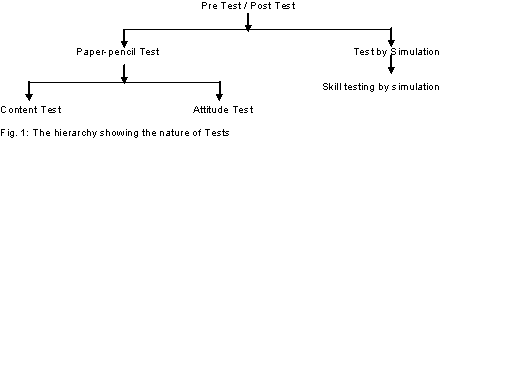
Table 1- Technical terms that were made easy
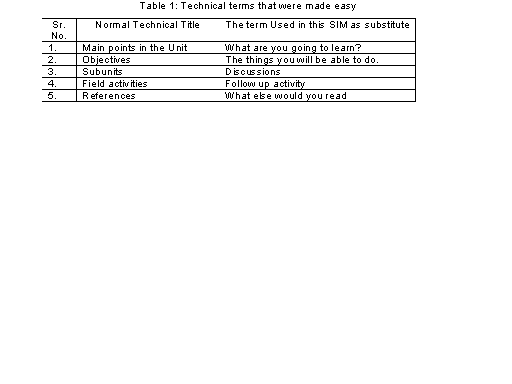
Table 2- Results of Content Tests
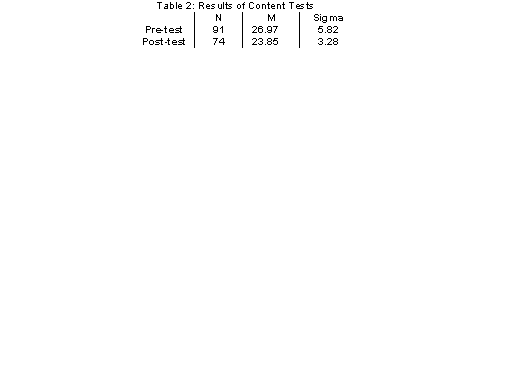
Table 3- Results of Skill Tests
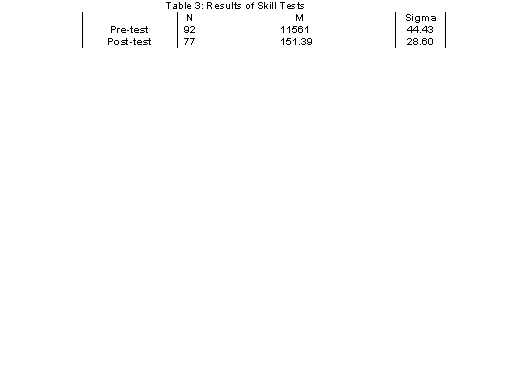
Table 4- Results of Attitude Tests
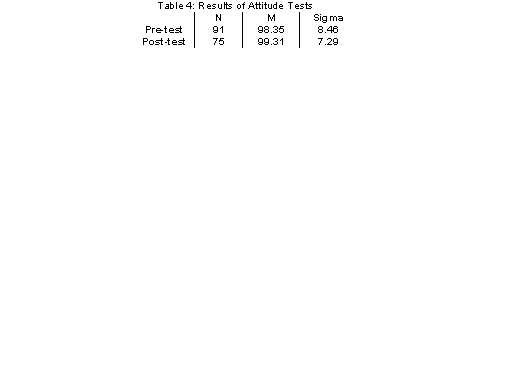
Table 5- Mastery Levels attained
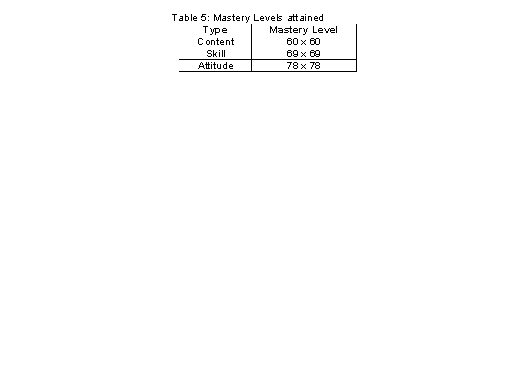
|
 |
Learn more
about this
publishing
project...
|
|

